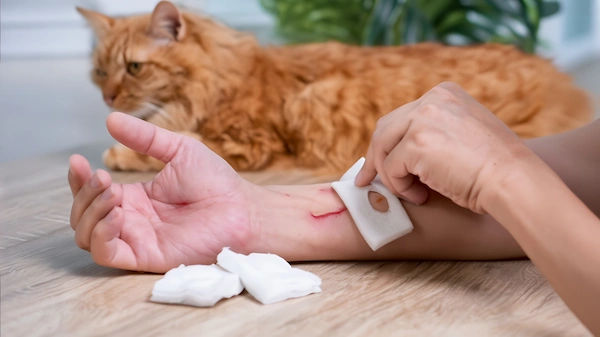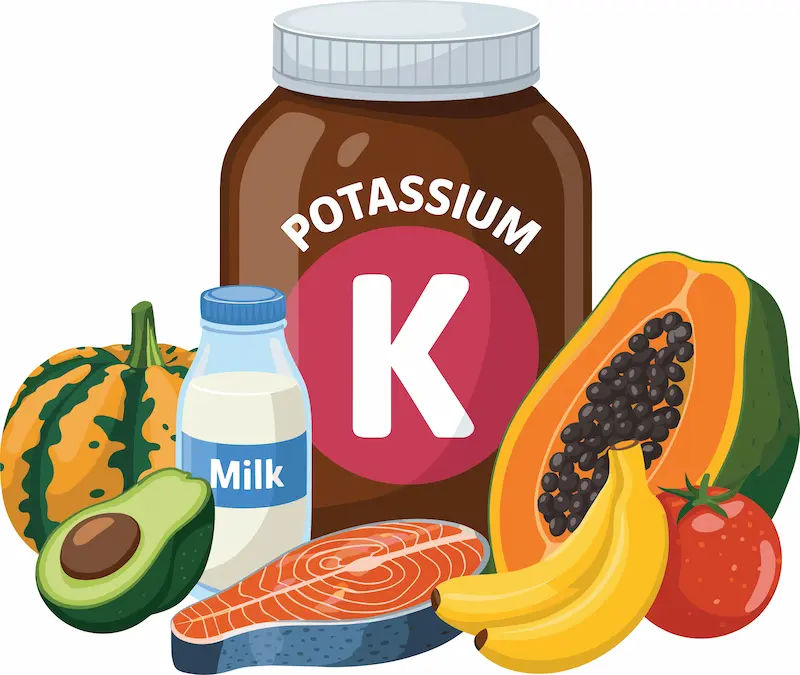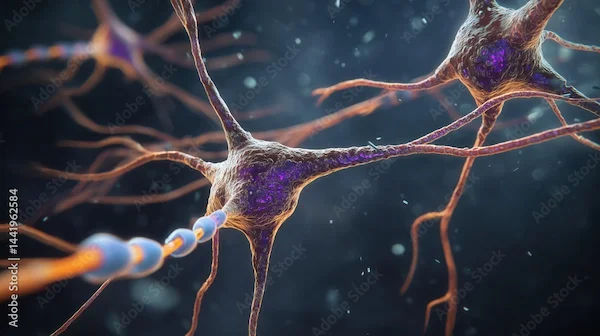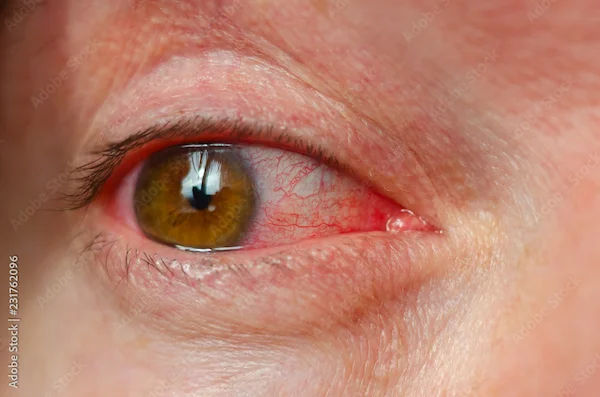What Leads To Signs Of Guillain Barre Syndrome And
Learn what leads to the signs of Guillain-Barré syndrome (GBS)—its causes, triggers, early symptoms, diagnosis, and treatment. Understand how infections or immune responses cause GBS and how early care supports recovery.

Written by Dr. Siri Nallapu
Reviewed by Dr. Rohinipriyanka Pondugula MBBS
Last updated on 29th Oct, 2025
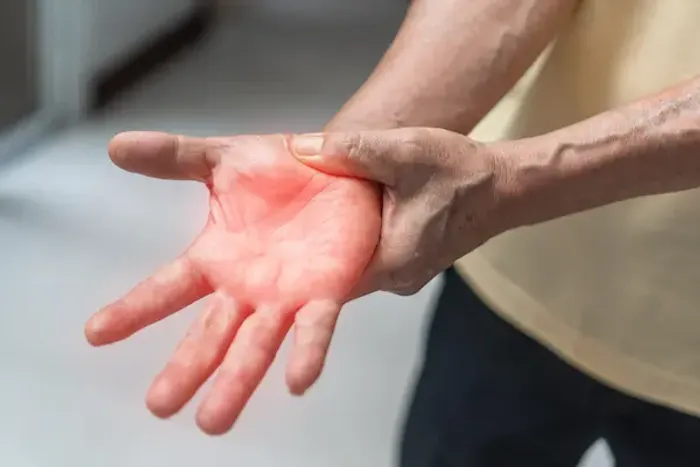
Introduction
If you’re worried about tingling feet that crept up your legs, sudden weakness after a tummy bug, or eye symptoms after a recent infection, you’re not alone. These can be early clues to Guillain-Barré syndrome (GBS)—a rare but serious condition where the immune system mistakenly attacks the nerves. Understanding what leads to the first signs matters because GBS can progress quickly, sometimes affecting breathing and heart rhythm. The good news: with prompt recognition and the right care, most people recover.
In this guide, we break down what can trigger these warning signs, how GBS unfolds in the body, who’s at higher risk, and what tests and treatments doctors use. You’ll also learn how GBS differs from look-alike conditions, what recovery looks like, and practical steps to lower your chances of known triggers. Throughout, we’ll blend expert guidance with real-world examples and the latest evidence, keeping it conversational and grounded for the general reader. If symptoms progress fast or you’re unsure, seek urgent care; if symptoms persist beyond two weeks, consult a doctor online with Apollo24|7 for further evaluation. Along the way, we’ll naturally include key phrases people search for—like syndrome, guillain, barre—so you’ll find what you need, fast.
A Quick Primer on Guillain-Barré Syndrome
Guillain-Barré syndrome (GBS) is an acute, immune-mediated attack on the peripheral nervous system—the nerves outside the brain and spinal cord. Most people first notice tingling or numbness in the feet and hands, followed by weakness that often “ascends” from the legs to the arms. Reflexes may fade or disappear, and pain or unsteady walking is common. In severe cases, the weakness can affect the muscles that help you breathe, and the autonomic nerves that regulate heart rate and blood pressure, which is why timely medical care is crucial.
Consult Top Specialists Here
How common is it?
GBS is rare, affecting about 1–2 people per 100,000 each year, with risk rising with age and slightly higher in males. Even though it’s uncommon, recognising the pattern matters because early treatment improves outcomes. Most people reach their weakest point within two to four weeks.
Why it matters for early action
About two-thirds of people report an infection—often a respiratory or stomach illness—in the six weeks before symptoms begin. That timing is a key clue: the immune system can mistake nerve components for parts of the germ it just fought. Because the condition can progress quickly, new or rapidly worsening weakness, difficulty walking, facial weakness, or trouble breathing should prompt urgent evaluation. If symptoms persist beyond two weeks or you’re uncertain what you’re feeling, consult a doctor online with Apollo24|7 for guidance and next steps.
What Leads to the First Signs?
GBS starts when the immune system, primed by a recent trigger, misidentifies parts of your peripheral nerves as foreign. Antibodies and immune cells then target nerve myelin (the insulation) or the axon (the wire), disrupting nerve signals. That’s why early signs include tingling and weakness—the signals simply aren’t getting through properly.
Molecular mimicry after infection
The most accepted mechanism is “molecular mimicry.” Certain germs, particularly Campylobacter jejuni (a common cause of foodborne diarrhoea), carry molecules on their surface that resemble gangliosides—fatty components on human nerves. After the infection, antibodies meant for the bug cross-react with nerve gangliosides, triggering inflammation and damage. This helps explain why signs often appear one to three weeks after a stomach bug or flu-like illness. It also explains the variety of symptoms: different antibodies target different nerve parts, leading to different variants.
Demyelination vs axonal injury (AIDP vs AMAN/AMSAN)
- AIDP (acute inflammatory demyelinating polyradiculoneuropathy) is the most common variant in North America and Europe. The immune system strips myelin, slowing or blocking conduction; early signs are areflexia, tingling, and ascending weakness.
- AMAN/AMSAN (acute motor axonal neuropathy/acute motor-sensory axonal neuropathy) are more common in parts of Asia and Latin America and often follow C. jejuni. Here, antibodies target axonal membranes, leading to early, often more severe weakness. Reflexes can be preserved or lost, and recovery may be slower.
Early Signs and Symptoms you Shouldn’t Ignore
GBS typically begins with sensory changes—pins-and-needles (paraesthesias) in the toes or fingers—followed by weakness that moves upward. People describe “rubbery legs,” falls, difficulty climbing stairs, or trouble opening jars. Pain (often in the back or legs) is common and can be sharp or aching. Reflexes usually diminish early, and gait may become unsteady. Facial weakness can cause drooping, difficulty closing eyes tightly, or slurred speech. Some notice double vision or difficulty focusing.
Red-flag symptoms needing urgent care
- Rapidly worsening weakness over hours to days
- Shortness of breath, shallow breathing, or difficulty counting to 20 in one breath
- Trouble swallowing, drooling, choking on liquids
- Severe fluctuations in heart rate or blood pressure, fainting spells
- Inability to walk independently or frequent falls
If you experience these, seek emergency care immediately. In many cases, hospital monitoring prevents serious complications and speeds treatment. If your condition is less clear but you’re worried, book a physical visit to a doctor with Apollo24|7.
The Miller Fisher variant: eyes, gait, and reflexes
Miller Fisher syndrome presents with a classic triad: eye movement problems (ophthalmoplegia), ataxia (unsteady gait), and areflexia (absent reflexes), often without much limb weakness. It’s linked to anti-GQ1b antibodies and sometimes follows a respiratory infection. Early recognition is important, as breathing and cranial nerve involvement can still occur. Treatments are similar to other GBS forms.
Triggers Linked to GBS
Here are the triggers for GBS:
After stomach bugs: Campylobacter jejuni
C. jejuni, often acquired from undercooked poultry or contaminated food/water, is the leading identifiable trigger. Studies have found a strong association between recent C. jejuni gastroenteritis and subsequent GBS, especially axonal variants. While most people with C. jejuni recover uneventfully, a small fraction develop GBS in the following weeks. Practical takeaway: thorough hand-washing, careful kitchen hygiene, and fully cooking poultry reduce exposure.
Viral links: flu, COVID-19, Zika, dengue, CMV, EBV
- Influenza and other respiratory viruses are frequently reported in the weeks before GBS.
- Cytomegalovirus (CMV) and Epstein-Barr virus (EBV) are classic triggers; CMV-associated GBS can involve more sensory symptoms and facial weakness.
- Zika outbreaks were accompanied by marked spikes in GBS numbers, supporting a causal link; many Zika-associated cases had distinctive antibody patterns and cranial nerve involvement.
- Dengue infection has also been associated with GBS in endemic regions.
- SARS-CoV-2 (COVID-19): GBS has been reported after infection, generally rare relative to the vast number of infections; ongoing studies continue to refine risk estimates.
Vaccinations: real but rare risks
Large studies show that certain vaccines can very rarely precede GBS, with the seasonal influenza vaccine adding approximately 1–2 additional GBS cases per million doses in some seasons—far lower than the GBS risk after influenza infection itself. For COVID-19 vaccines, specific formulations have shown a small signal in some analyses, but the absolute risk remains very low and benefits of vaccination in preventing severe illness generally outweigh the risks. Discuss concerns with your clinician; personal risk (e.g., prior GBS temporally related to a vaccine) warrants individualised guidance.
Surgery, trauma, and pregnancy
GBS has been reported after surgery and rarely in the postpartum period. The mechanism may involve immune activation from tissue injury or shifts in immune tolerance. While rare, it’s a reminder that if progressive weakness follows these events, prompt medical evaluation is necessary.
Who is more at risk?
Let’s see who is at risk:
Age, sex, and geography
- Age: Incidence increases with age, especially over 50.
- Sex: Slightly more common in males.
- Region: AIDP predominates in Europe/North America; axonal variants (AMAN/AMSAN) are relatively more common in East Asia and Latin America, reflecting environmental exposures like C. jejuni strains and host factors.
Gut microbiome and genetics—emerging insights
Beyond known triggers, research suggests your gut microbiome composition might influence immune responses after infections, potentially affecting GBS risk. Certain HLA types and genetic variants in immune regulation pathways are being studied for susceptibility, though no single gene explains GBS. This line of research may someday help identify who’s at higher risk after a given infection and tailor preventive strategies—like targeted probiotics after gastroenteritis—once evidence matures.
How Doctors Find the Cause Behind your Signs?
Here’s how doctors find the cause:
Clinical exam and bedside tests
Doctors look for the pattern: symmetrical weakness (often ascending), reduced or absent reflexes, sensory changes, pain,
and signs of autonomic instability (sweating, heart rate swings). Simple bedside measures like grip strength, head lift time, and counting aloud on one breath help monitor respiratory muscle strength. Tools like the Hughes GBS disability scale track severity over time.
CSF and nerve studies: what they show
- Lumbar puncture (spinal tap) often shows “albuminocytologic dissociation”—high protein with normal or only slightly
elevated white cells—after the first week; an early normal result doesn’t exclude GBS. - Nerve conduction studies/electromyography (NCS/EMG) can demonstrate demyelination (slowed conduction, conduction block) or axonal damage (reduced amplitudes), supporting the diagnosis and variant classification.
- Blood tests help rule out mimics and detect recent infections (e.g., elevated anti-ganglioside antibodies in some variants).
Ruling out look-alikes
Doctors consider spinal cord disorders, myasthenia gravis, botulism, periodic paralysis, tick paralysis, porphyria, and critical illness neuropathy. The combination of symmetric weakness, reduced reflexes, sensory symptoms, and the CSF/NCS patterns help distinguish GBS.
When ICU monitoring is essential
About one-third of hospitalised patients need intensive care for breathing support or autonomic instability. Warning signs include rapidly rising weakness, declining vital capacity, or severe blood pressure swings. Early ICU transfer can be lifesaving.
If your symptoms evolve quickly, go to the emergency department. If you’re noticing persistent tingling or mild weakness and aren’t sure, consult a doctor online with Apollo24|7 for next steps; early guidance can streamline testing and referrals.
Treatment: Targeting the Process
Here’s the treatment for GBS:
IVIG vs plasmapheresis—what the evidence says
Two disease-modifying treatments shorten the disease course: intravenous immunoglobulin (IVIG) and plasma exchange (plasmapheresis). High-quality studies show they are about equally effective when started within the first two weeks of weakness onset; combining them does not add benefit. IVIG is often easier to administer; plasmapheresis may be chosen based on availability, contraindications, or clinical nuances. Steroids alone are not effective for classic GBS.
Managing pain, breathing, and autonomic swings
- Pain control (neuropathic agents like gabapentin, careful use of opioids) improves comfort and mobility.
- Respiratory support ranges from non-invasive ventilation to intubation if needed. Regular checks of vital capacity guide timing.
- Autonomic dysfunction (blood pressure spikes/drops, arrhythmias) requires continuous monitoring and tailored medications.
- Thrombosis prevention, skin care, bladder/bowel management, and infection prevention are critical supportive steps.
Corticosteroids and new therapies in the pipeline
Classic corticosteroids haven’t shown benefit in GBS, but research is active on targeted approaches—complement inhibitors, FcRn antagonists, and B-cell therapies—aiming to neutralise the offending immune components more precisely. Clinical trials may be available in specialised centres.
Consult Top Specialists Here
Recovery, Prevention, and Living well after GBS
See how to prevent and recover from GBS here:
Timeline, relapse risk, and long-term outlook
Most people begin to improve within weeks after treatment starts. About 60–80% walk independently at six months,
though fatigue and pain can linger; 5–10% have substantial long-term weakness, and mortality is roughly 3–7% in
modern series, largely related to complications. True recurrences are uncommon (approximately 2–5%). If your
condition does not improve after trying these methods, book a physical visit to a doctor with Apollo24|7 for
reassessment and rehabilitation planning.
Rehabilitation that speeds recovery
Early, structured rehabilitation—range-of-motion exercises, gradual strengthening, balance training, task-specific practice—helps restore function. Energy conservation and pacing strategies combat post-GBS fatigue. Occupational therapy adapts home and work tasks; speech therapy assists if swallowing or voice were involved. Psychological support matters; the abrupt loss of independence is stressful.
Practical steps to reduce known triggers
- Food safety: cook poultry thoroughly, avoid cross-contamination.
- Respiratory virus prevention: hand hygiene, masks in high-risk settings, flu vaccination (after clinician discussion if you’ve had GBS).
- Travel precautions for mosquito-borne infections (Zika/dengue): repellents, clothing, nets, and local advisories.
- Post-infection follow-up: if you develop tingling or weakness within weeks of an infection, seek care promptly.
Consult Top Specialists Here
Conclusion
Guillain-Barré syndrome is rare, but its early signs—tingling, ascending weakness, unsteady gait, facial changes—deserve attention, especially within weeks of a stomach or respiratory infection. That’s because the underlying problem is an immune misfire: antibodies that once fought a germ now cross-react with nerve components, disrupting signal flow. Knowing the common triggers (Campylobacter, influenza-like illnesses, CMV/EBV, Zika) and the rare but real vaccine associations helps you interpret new symptoms in context.
If GBS is suspected, timely evaluation is vital. Doctors rely on the clinical pattern, spinal fluid analysis, and nerve conduction studies to confirm the diagnosis and classify the variant. Early treatment with IVIG or plasmapheresis and vigilant supportive care—particularly for breathing and autonomic functions—improves outcomes. Most people recover well over months, aided by targeted rehabilitation and smart pacing strategies. It’s equally important to reduce known risks through food safety, infection prevention, and prompt care after suspicious symptoms begin.
Bottom line: noticing early signs and acting quickly can change the trajectory of GBS. If you’re experiencing persistent tingling, weakness, or sudden balance issues—especially after a recent infection—consult a doctor online with Apollo24|7 for guidance, or seek urgent care if symptoms are escalating. Early action is your best protection.
Consult Top Specialists Here

Dr. Aditendraditya Singh Bhati
Neurosurgeon
21 Years • MBBS(2004), DNB Neurosurgery(2014); MNAMS; Fellow Skull Base Endoscopy (Italy), Fellow Extended Skull Base ( Weill Cornell, USA), Fellow ZAP-X Radiosurgery. Member of American Association of Neurological Surgeons
Delhi
Apollo Hospitals Indraprastha, Delhi
(100+ Patients)

Dr. Ganeshgouda Majigoudra
Neurologist
10 Years • MBBS, MD ( GENERAL MEDICINE) DM (NEUROLOGY)
Bengaluru
Apollo Clinic, JP nagar, Bengaluru

Dr. E Prabhakar Sastry
General Physician/ Internal Medicine Specialist
40 Years • MD(Internal Medicine)
Manikonda Jagir
Apollo Clinic, Manikonda, Manikonda Jagir
(150+ Patients)

Dr Rajashekar Mummadi
Neurologist
3 Years • MBBS, DNB General Medicine, DRNB Neurology
Hyderabad
Dr Ram's Neuro Clinic, Hyderabad

Dr S Selvin
Neurologist
10 Years • MBBS, MD, DM (Neurology), FINR fellowhsip in Interventional Neuro Radiology
Chennai
Apollo Speciality Hospitals Vanagaram, Chennai
Consult Top Specialists Here

Dr. Aditendraditya Singh Bhati
Neurosurgeon
21 Years • MBBS(2004), DNB Neurosurgery(2014); MNAMS; Fellow Skull Base Endoscopy (Italy), Fellow Extended Skull Base ( Weill Cornell, USA), Fellow ZAP-X Radiosurgery. Member of American Association of Neurological Surgeons
Delhi
Apollo Hospitals Indraprastha, Delhi
(100+ Patients)

Dr. Ganeshgouda Majigoudra
Neurologist
10 Years • MBBS, MD ( GENERAL MEDICINE) DM (NEUROLOGY)
Bengaluru
Apollo Clinic, JP nagar, Bengaluru

Dr. E Prabhakar Sastry
General Physician/ Internal Medicine Specialist
40 Years • MD(Internal Medicine)
Manikonda Jagir
Apollo Clinic, Manikonda, Manikonda Jagir
(150+ Patients)

Dr Rajashekar Mummadi
Neurologist
3 Years • MBBS, DNB General Medicine, DRNB Neurology
Hyderabad
Dr Ram's Neuro Clinic, Hyderabad

Dr S Selvin
Neurologist
10 Years • MBBS, MD, DM (Neurology), FINR fellowhsip in Interventional Neuro Radiology
Chennai
Apollo Speciality Hospitals Vanagaram, Chennai
Consult Top Specialists Here

Dr. Aditendraditya Singh Bhati
Neurosurgeon
21 Years • MBBS(2004), DNB Neurosurgery(2014); MNAMS; Fellow Skull Base Endoscopy (Italy), Fellow Extended Skull Base ( Weill Cornell, USA), Fellow ZAP-X Radiosurgery. Member of American Association of Neurological Surgeons
Delhi
Apollo Hospitals Indraprastha, Delhi
(100+ Patients)

Dr. Ganeshgouda Majigoudra
Neurologist
10 Years • MBBS, MD ( GENERAL MEDICINE) DM (NEUROLOGY)
Bengaluru
Apollo Clinic, JP nagar, Bengaluru

Dr. E Prabhakar Sastry
General Physician/ Internal Medicine Specialist
40 Years • MD(Internal Medicine)
Manikonda Jagir
Apollo Clinic, Manikonda, Manikonda Jagir
(150+ Patients)

Dr Rajashekar Mummadi
Neurologist
3 Years • MBBS, DNB General Medicine, DRNB Neurology
Hyderabad
Dr Ram's Neuro Clinic, Hyderabad

Dr S Selvin
Neurologist
10 Years • MBBS, MD, DM (Neurology), FINR fellowhsip in Interventional Neuro Radiology
Chennai
Apollo Speciality Hospitals Vanagaram, Chennai
More articles from General Medical Consultation
Frequently Asked Questions
1) What causes Guillain-Barré after infection?
A recent infection can trigger molecular mimicry, where antibodies formed against the germ (like Campylobacter jejuni) mistakenly target nerve components, leading to GBS symptoms.
2) How soon after an illness do early signs of Guillain-Barré syndrome appear?
Typically 1–3 weeks after a respiratory or gastrointestinal illness; earlier or later presentations can occur. Seek care if tingling or weakness progresses.
3) Is the risk of GBS after a flu shot high?
No. The risk is very low—on the order of 1–2 additional cases per million doses in some seasons—much lower than the risk of GBS after influenza infection itself.
4) How is GBS diagnosed: what tests confirm it?
Doctors use the clinical pattern plus CSF analysis (often high protein with few cells) and nerve conduction studies showing demyelination or axonal damage.
5) What’s the Guillain-Barré recovery timeline?
Most people start improving within weeks; many walk independently by six months. Fatigue and pain may persist but often improve with rehabilitation and pacing.
